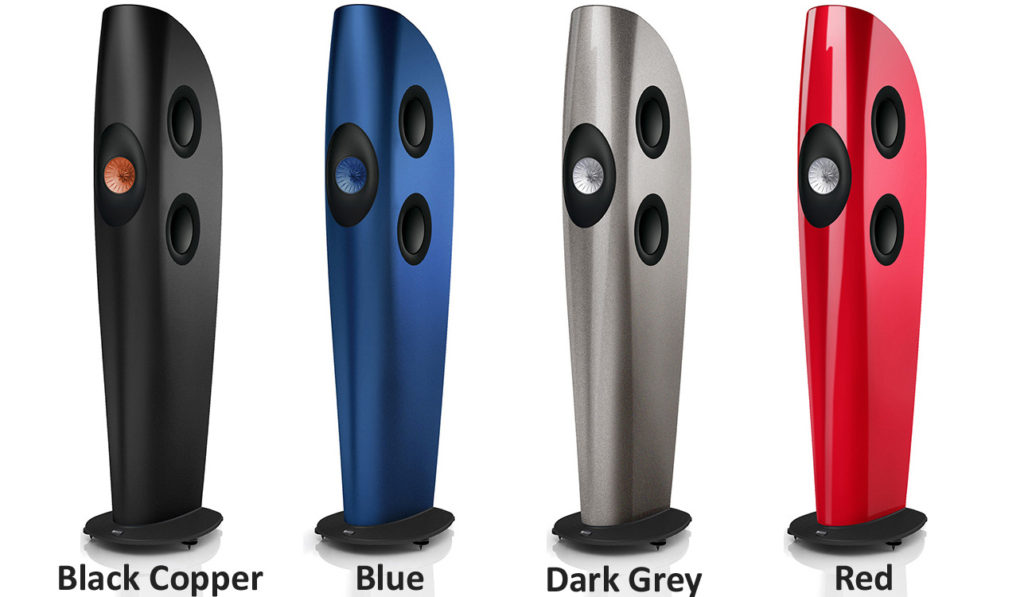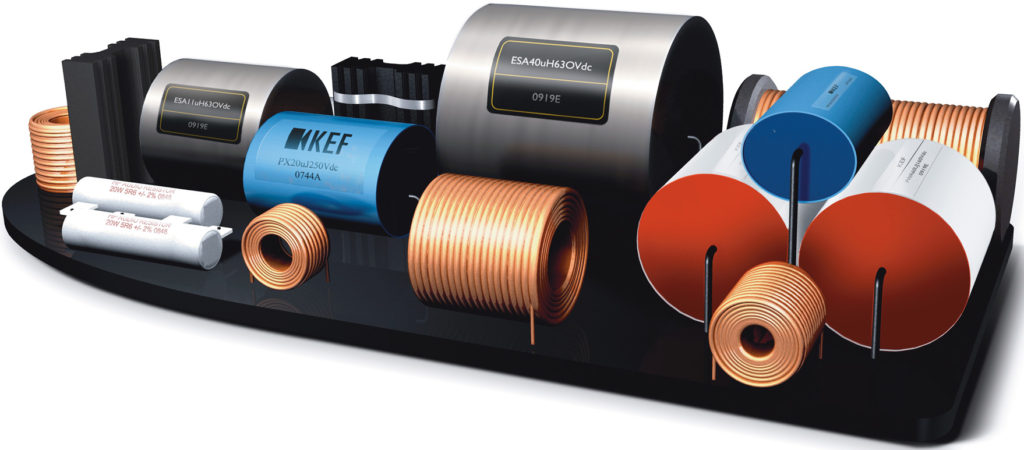Audition Setup
My small (12 feet wide x 17 feet long x 8.5 feet high) living room is where I enjoy my music. The Blades, despite their size and to my pleasant surprise, do not look out-of-place. However, despite all further comments in this review, I’ll wager that they would sound better in a larger space. That is not a knock on the speakers, it is a recognition that our small bungalow home built circa 1920 is the limiting factor to enjoying the best sound that could be produced by even a perfectly ideal sound system. But that said, how did I experience the sound that the Blades produced?
Seated in my listening chair at the sweet spot at center stage across the room from the speakers my ears are 14 feet from the centerline of the Uni-Q driver at 42 inches above the hardwood floor. The center of the Uni-Q driver is, wait-for-it, 42 inches above the floor! Nice coincidence.
I utilized the Nordost System Set-Up Tuning Disc to uncover any deficiencies or problems with the loudspeakers. The following tests were performed: phase and channel checks, pink noise, white noise, LEDR tones, 20Hz to 7kHz frequency sweeps and low frequency sweeps from 18Hz to 90Hz in 3Hz and 5Hz intervals.
Pink noise sounded smooth and uncolored. White noise revealed no problems or anomalies. Low frequency tones were powerful down to 20Hz. Increasing the volume did not produce anything audible at the lowest frequencies but did cause the my metal wall sculptures to violently vibrate as they have when our small earth tremors occur (yes, I live in California about ½ mile west of the Hayward Fault). Yet the speaker enclosures exhibited no vibration whatever. This was real-time proof that the speaker design of back-to-back placement of the four opposing woofers achieved its theorized ability to cancel cabinet vibrations. All other tests proved unremarkable; i.e., no problems – everything was now in place to commence the audition.
Listening Experience
The first musical work I played was Bach Double Violin Concerto, BWV 1043, with soloists Giuliano Carmignola and Mayumi Hirasaki performing the Concerto Köln (Deutsche Grammophon Archiv 0289 479 2695 5). The balance of the instruments was excellent, the sound intimate and unforced. There was no coloration. Imaging was so refined that the performers were present in my living room. The Blades played everything on this recording perfectly as it should be heard.
Next up was the CD of John Coltrane’s My Favorite Things [Atlantic 7567-81346-2]. The quality of the easy rolling piano opening was instantly obvious and fresh. The cymbals were perfectly placed and ethereal which only increased the reference to the rhythmic pattern. Coltrane’s solo never lost touch with the rhythm section despite his meanderings.
Listening to the waltzes from Richard Strauss’s opera Der Rosenkavalier, the oboe and violin duet was recreated by the Blades with the image of every instrument fittingly “small” when compared against the orchestral backdrop. But those small images were not obscured at all. The stereo imaging was stable and precise.
Impressions and Conclusions
My first listening experience with the KEFs was at an audio show several years ago where I also listened to the big YGs. What instantly impressed me was the Blades sounded as good as the $120,000 YGs that were driven by $150,000 worth of electronics. Some large floor standing loudspeakers sound “big” no matter what is playing. The Blades could act and sound like a small studio monitor when the music required it. Then when the music was large scale, as with a recording of Beethoven’s Ninth, the Blades took advantage of their full stature to realistically recreate the experience of being seated in a concert hall listening to a full symphony orchestra and chorus performing the monumental work. And doing that without individual objects in the sound stage being inflated or sounding exaggerated. This is a strength of the Blades’ point source imaging. Stereo images aren’t bloated and everything sounds to the proper scale. The placement and location of instruments and voices within the sound field is extraordinary.
Another immediate impression was that the Blades are room dependent and work best in a fairly large space. This is probably true of many, if not all, side-firing woofers. In order to achieve the best sound the Blades should be placed well away from walls. Exceptional stereo imaging and ‘open’ voicing are immediately noticeable upon connecting the speakers. Their stereo imaging is their most outstanding and obvious characteristic. In fact, the bottom-end will not immediately attract attention with most music. But it is deep, powerful and well timed, while free of any coloration.
The design criteria are clearly satisfied by the impressive and engaging bottom-ends. The design of the Blades is apparent in their exceptionally wide dynamic range and the speed of low frequency response delivered by the massive motors on the drivers. This yields exceptional results with classical and choral material when low level ambience, accurately reproduced, is a crucial component of creating an effective sonic impression.
These speakers can perform with the impact of a air hammer and are also excellent with complex rhythms. Both voice and acoustic strings come realistically alive with no strain. The speakers’ spatial coherence is in the control of the time domain. The Blades not only properly place musicians where they sat, they reproduce the exact impact of that positioning on the arrival time of what each performer is playing.
What don’t the Blades do well? If anything it’s the final portion of instrumental texture. That is something you only find in speakers costing many times the price of the KEF speakers. But more than anything else they perform so coherently and are so well balanced that their sound is intrinsically satisfying.
Although not inexpensive, the price of a pair of KEF Blades just doesn’t seem that extravagant in the current high-end market. What you get for your money is without doubt one of the most beautiful loudspeakers available. But make no mistake. Looks aside, the Blades are all about engineering.. Beware of being beguiled by their good looks lest you forget that what you are getting for all that cash: the most advanced state-of-the-art engineering you will find in a modern loudspeaker.
If you set up the Blades properly you will not find anything better for what they cost. To me, the KEFs sounded much like a pair of $70,000 Wilson Maxx but with greater coherence and a more composed top-end. I doubt any of us have experienced a $30,000 loudspeaker perform as well as a $70,000 loudspeaker. That is, until now; the Blades are a steal for what they do.
Additional available finishes: (actual finishes may differ slightly from computer display)
Associated Equipment
Nordost System Set-up and Tuning Disc
PS Audio Perfectwave Powerplant 10 AC Re-generator Balanced Audio Technology VK32 (Valve) Preamplifier Music Hall c-dac15.3 CD Player
Musical Fidelity 550K Mono block Bridged Power Amplifiers (pair) Loudspeaker Cables: Nordost Red Dawn
Interconnects: Nordost Blueheaven; AudioQuest King Cobra; AudioQuest Black Mamba
Power Cables : Shunyata Venom-3 Power; WattGate
- ← Previous page
- (Page 2 of 2)
















Hello Jeff, a great review, we were the dealer that I think you heard the speakers at the Show in New York in 2012. We had a set of the Blades with all Chord Reference electronics. The system was pricey with $50k worth of electronics and a $22k Dac howerver, we also heard the YG Sonja setup at $107k with $120k worth of Solution amps, a $40k Solution preamp and that wasn’t including any of the other gear, that system was about $400k vs ours at $120k. The Blades cost $30k the big YG $107
I thought our Blade setup was just as good too!
If you are on the East Coast you should hear our setups with the T+A gear from Germany absolutely mind blowing gear. http://www.audiodoctor.com
Nice KEF promo. Blade is the only decently sounding speaker from disappointing Kef stable, however it will fall at first hurdle in the name of Wilson Sophia which will provide more resolution and details. Not talking about new Yvette and Blade is not coming close by country mile to Alexia, so please no need to mention ” poor old Maxx”
There are many producers and engineers mixing on KEF LS50’s.
Alexander Rudoy
The mind is like a parachute . . . works best when open. Apparently you disagree with most experts, producers and engineers when you state ” . . . disappointing Kef stable.” Try giving ANY Kef but especially the Blade a proper listen and you MIGHT understand that the value proposition of the Blade embarrasses just about ANY Wilson. Not saying Wilson is not good. But this “Blade not coming close by a country mile” of yours is exaggerated by a country mile. BTW I don’t own either Wilsons OR Kefs – Dynaudio happens to be my cup of tea but yes, I know, they don’t come close to Wilsons by a country mile either, right?
That rendition of the Blade’s crossover is way different than the actual Blade crossovers I found under a Google images search. The crossovers found there have some of the inductors are iron core, a few of the capacitors are electrolytic, and all sand cast resistors. Just try to imagine how good they would sound with a couple of hundred more spent on parts.